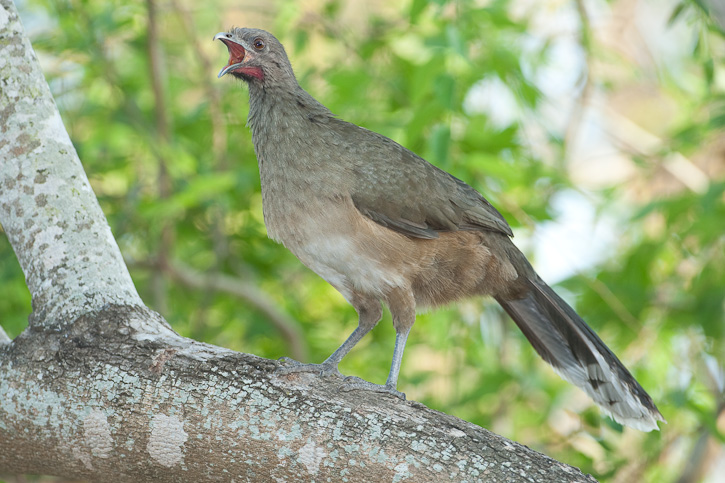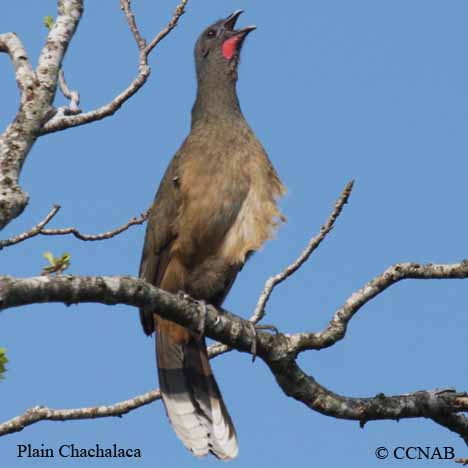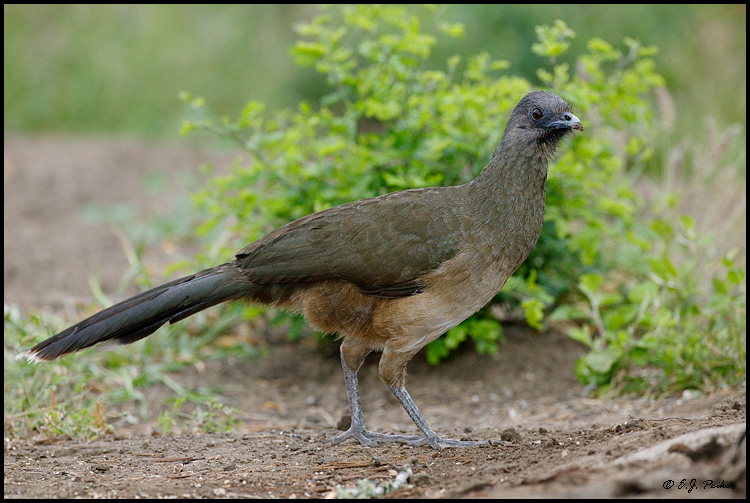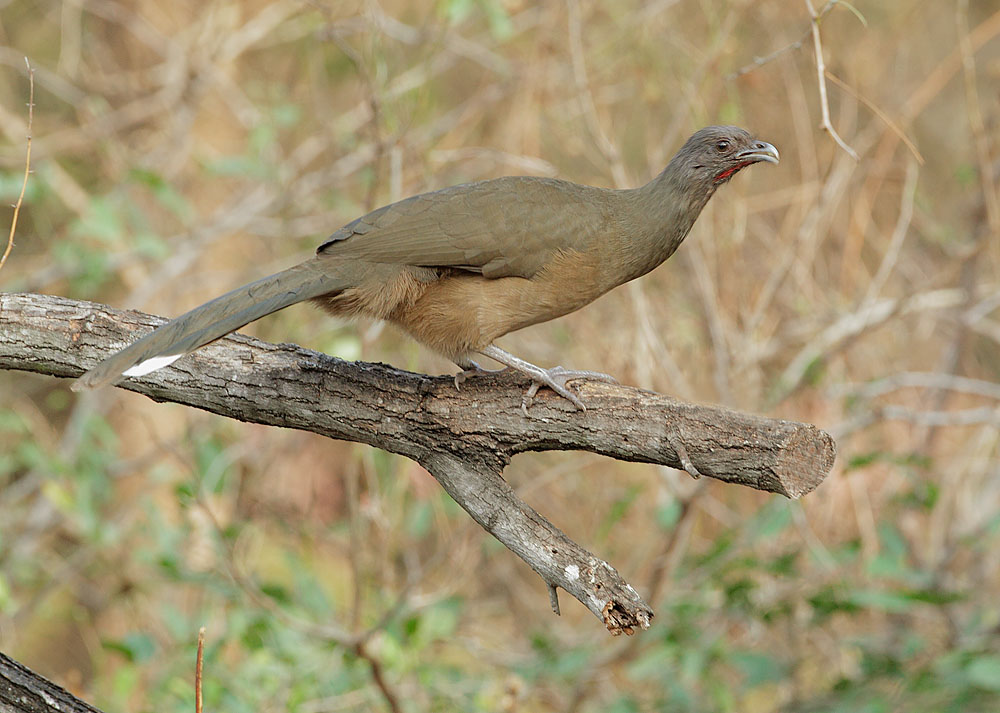
Ortalis vetula
SUBFAMILY
Penelopinae
TAXONOMY
Penelope vetula Wagler, 1830, Mexico. Four subspecies.
OTHER COMMON NAMES
English: Common chachalaca; French: Otalide chacamel; German:
Blauflьgelguan; Spanish: Chachalaca Norteсa.
PHYSICAL CHARACTERISTICS
19–22.8 in (48–58 cm); 15.5–28 oz (440–794 g). Plain coloration,
races vary in size and color.
DISTRIBUTION
This species ranges from south Texas to eastern Mexico and
Costa Rica.
HABITAT
Scrub and tall brush vegetation. Also occurs in lowland and
pre-montane forest in Central America.
BEHAVIOR
The full morning chorus of the plain chachalaca (Ortalis vetula)
is unforgettable. One of these birds, sitting in a tree above
dense secondary growth, calls with a rough, unmelodic, but remarkably
strong voice, “cha cha lack, cha cha lack.” The
neighbors take part and a real din of loud calls arises. When
those nearby have become quiet, one hears other more distant
voices. The chorus seems to decline until from a distance of
over half a mile (1 km), one can hear no more. Then the noise
surges back with increasing strength and finally an earsplitting
din is produced by a group of six to eight of the birds situated
vertically above the observer.
FEEDING ECOLOGY AND DIET
Fleshy fruit comprises much of their diet. Also green leaves,
buds, shoots, and twigs. Some insects.
REPRODUCTIVE BIOLOGY
Nests are most often built in trees 3.3–33 ft (1–10 m) off the
ground. The nest itself virtually nonexistent, with birds often
laying eggs on bare limbs. The clutch size is typically two to
four eggs with an average incubation of 25 days.
CONSERVATION STATUS
The Utila Island subspecies (off north Honduras) population
has declined, and is possibly extinct.
SIGNIFICANCE TO HUMANS
Sometimes consumed for food.
Photo Gallery of - Plain chachalaca




 Animalia Life
Animalia Life